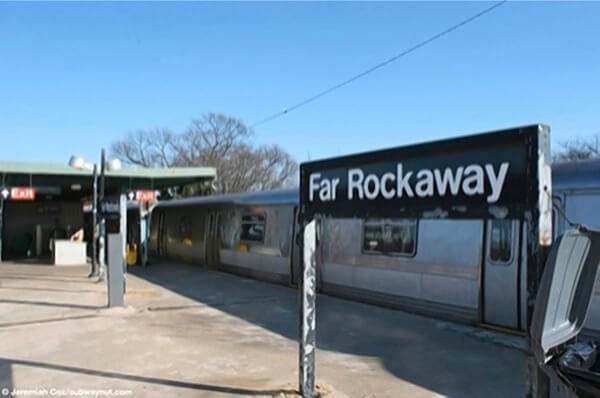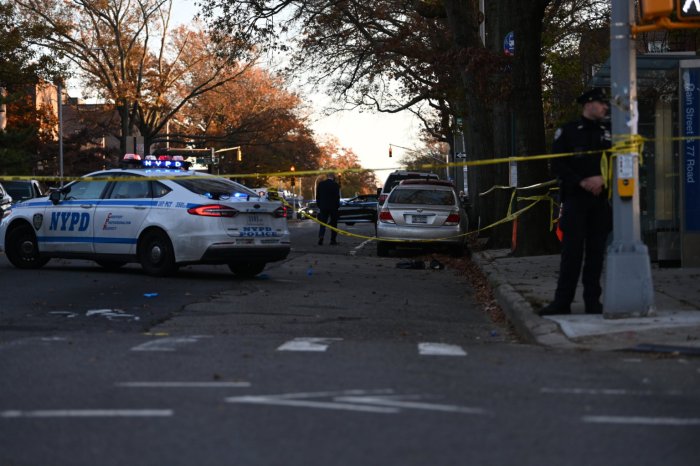By Mark Hallum
Five years after Superstorm Sandy has left transit infrastructure still awaiting overhauls from water damage while agencies sit on federal funds for East River Tunnel repairs. But some communities have used the trials of public transportation following the devastation as a springboard into new ways of getting around.
Meanwhile, in south Queens, advocates alongside City Councilman Eric Ulrich (R-Ozone Park), work to use Sandy as a springboard for new and innovative solutions to the lean public transportation system in the Rockaways and as far north as Woodhaven.
The popularity of the new city ferry service to the Rockaways has not only put the boardwalk on the map like never before, according to Ulrich, but is popular for commuters going to the Financial District and demand is there for expansion.
He also hopes a compromise can be struck between those advocating for the reactivation of the Rockaway Beach line of the LIRR, the elevated tracks of which still cut their way through south Queens up to Forest Hills, and proponents of using the right-of-way for a park.
Larry Penner, who spent 31 years with the Federal Transit Administration, says many of the power outages in the four commuter rail line tunnels beneath the East River result from damage sustained from flooding during Sandy. Although grants from the federal government have been awarded to the MTA, bureaucracy and logistical issues have stood in the way of the LIRR completing repairs.
“The Federal Transit Administration provided $432 billion in June 2016 to the Metropolitan Transportation Authority. These funds were intended to be spent quickly for 2012 Super Storm Sandy-related work in the East River Tunnels to bring them up to a state of good repair. Amtrak may not begin to use these funds for another eight years, until 2025,” Penner said.
“This does no one any good. The funds do not sit in an interest-bearing account. Based upon the Master Grant Agreement between the MTA and FTA – Uncle Sam has the option to de-obligate these funds and close out the grant. There are 98 other senators and over 400 congressional members keeping tabs on how the MTA spends federal dollars. They have their own projects and programs looking for funding.”
Although the East River tunnels are under the purview of Amtrak, which owns Penn Station and maintains the tunnels, Penner said the Federal Transit Administration would only offer a grant to another government agency. The money was given to the MTA with the understanding it would work out a third-party agreement for repairs with Amtrak.
But, according to Penner, the effort needed to overhaul these four tunnels would require the complete shutdown of one or all of the tubes and would have a massive impact on LIRR service to Penn Station, which is the nation’s largest and busiest rail hub.
Work force contracts also cripple repair efforts with the MTA only being able to employ workers from a limited number of companies that are unionized.
Penn Station has already seen setbacks of similar magnitude with what Gov. Andrew Cuomo called the “Summer of Hell.” A full 20 percent of the tracks within Penn Station were shut down for eight weeks for infrastructure overhauls, especially a vital switching point which had been the location of derailments.
Penner also sees a great detriment to Queens commuters with the planned shutdown of the L train for repairs to the Canarsie Tunnel, which sustained heavy damage during the storm. The 2019 hiatus could cause a displacement of people from the L train to the G and No. 7, which is already infamously overburdened.
The Rockaways have seen an economic boom with a newly restored boardwalk bringing foot traffic to local businesses on the peninsula, and, according to Ulrich, newly launched ferry service has drawn people in from across the city to enjoy the beaches.
The current city subsidized ferry service was inspired by the popularity of a temporary Rockaway ferry, which was launched directly in the wake of Sandy to make up for the impact the storm had on the rail service.
But Ulrich is skeptical that the current level of the Rockaway ferry service is enough. He said it should be expanded and supplemented with bus service expansion in order to get cars off the road.
“The ferry is heavily subsidized… It’s a tremendous cost to the city and I think the verdict is still out as to whether or not this is getting people out of cars and creating a mode shift,” Ulrich said.
In order to expand rail service, Ulrich is in favor of an option rarely discussed regarding the derelict tracks left behind by the Rockaway Beach branch of the LIRR, which was shut down in the early 1960s.
While park advocates are fighting to have the trestle, rusted and overgrown with trees and plants, turned into a park similar to the Highline in Manhattan, transit activists say the borough has enough greenspace as it is and the right-of-way should be reclaim for a renewed demand for public transportation.
Ulrich believes the people of Queens can have the best of both worlds.
“Extending the Second Avenue subway to Brooklyn and allowing that to connect to the LIRR at Atlantic Avenue, using the existing line under Atlantic Avenue and then reactivating part of the Rockaway Beach rail line to take people to a connection to the airport,” Ulrich said. “It would not require $300 billion of capital investment… If that is the case, then I will also argue that they should also extend it from the airport to Rockaway. I also think this would also be a very good compromise for people who want to see the QueensWay. They could have it north of Atlantic Avenue. People would not have to worry about a train going through their backyards in Forest Hills, Woodhaven and Kew Gardens where they don’t want the train reactivated. If they want the QueensWay, they can do it. But south of that where people want transit options, this is the way to do it.”
Reach reporter Mark Hallum by e-mail at mhall






























